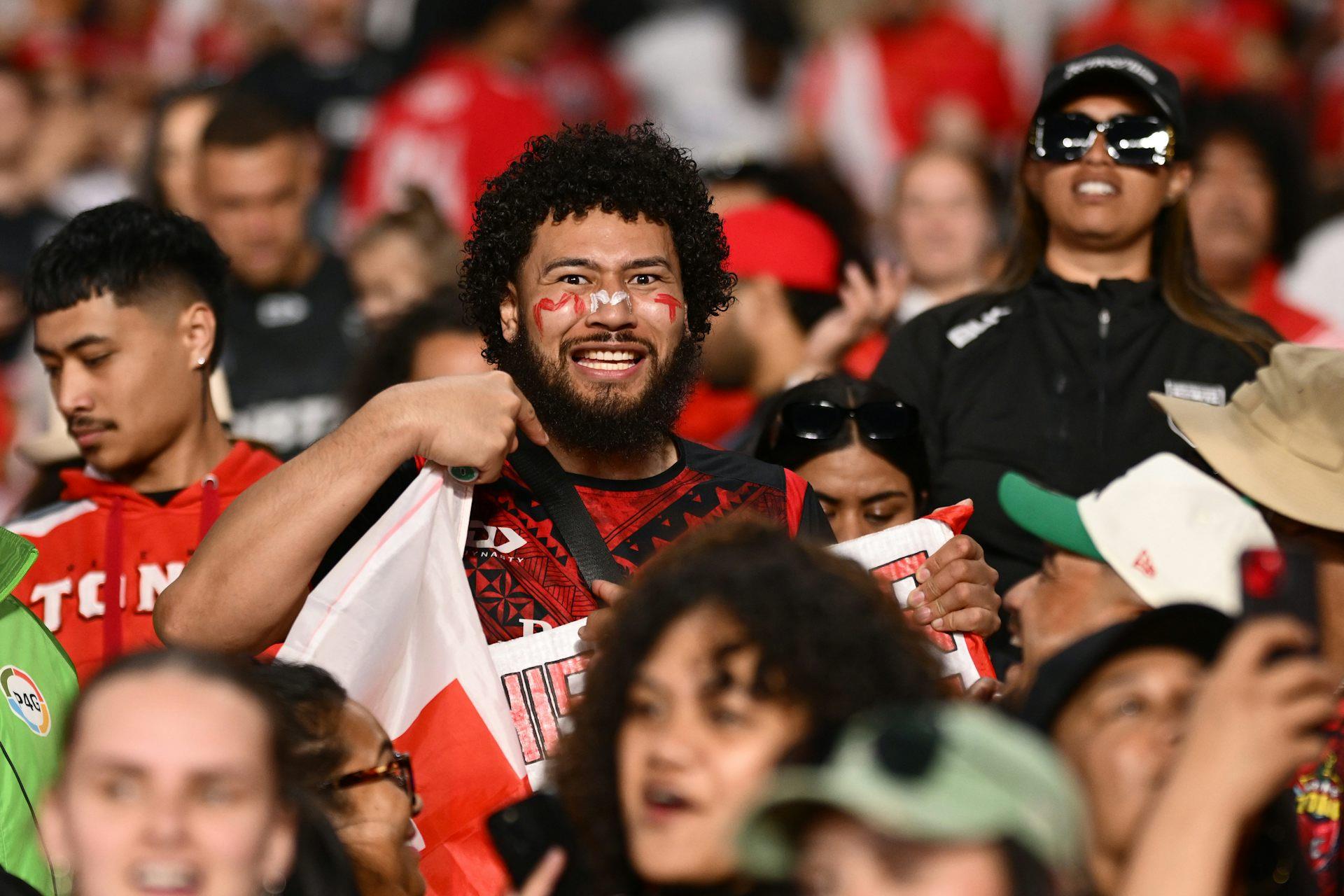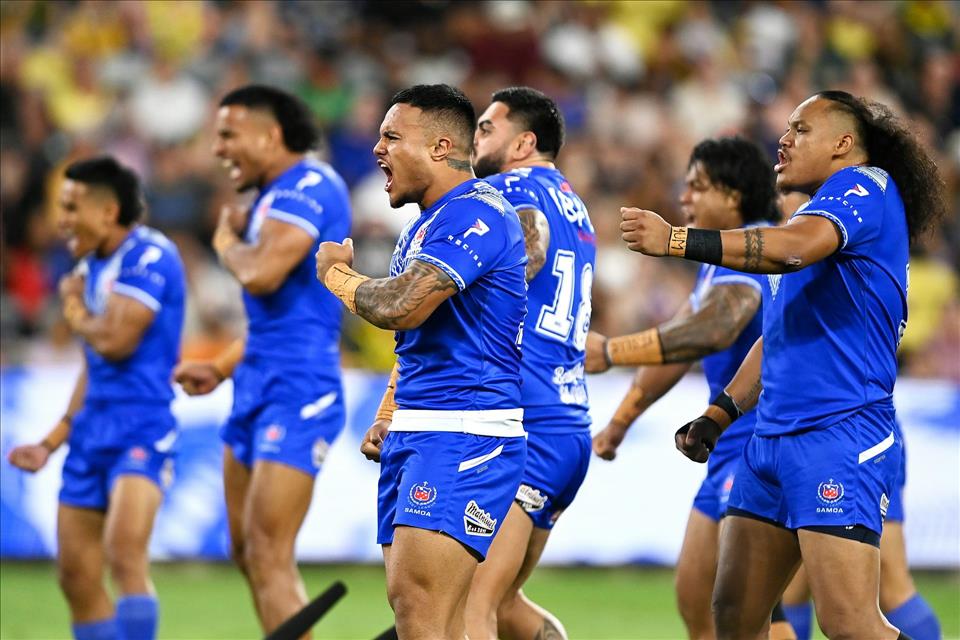
The Future Of Rugby League In Australia, NZ And The Pacific Is Here And It's Brown
As the New Zealand Kiwis and Toa Samoa prepare to clash for the Rugby League Pacific Championship's Pacific Cup on Sunday, it's clear the top calibre Pacific players have catapulted the game to another level.
The throngs of Pacific fans behind them – including superstar Toa Samoa supporter Dwayne“The Rock” Johnson – are bringing their own force as this thrilling competition draws to a close.
That energy was on full display as Toa Samoa fended off Mate Ma'a Tonga in Brisbane two weeks ago, while the PNG Kumuls clinched their third straight Pacific Bowl with a commanding victory over Fiji Bati last week.
This weekend promises plenty more action: along with the men's cup decider, the Kiwi Ferns will square off against the Australian Jillaroos in the women's competition final on Sunday.
Launched by the National Rugby League (NRL), the Pacific Championships are the latest evolution of the Oceania Cup – which itself replaced the old ANZAC Test once played solely between Australia and New Zealand.
The shift reflects the code's growing centre of gravity in the Pacific, where nations such as Samoa, Tonga and Papua New Guinea are now driving the game's expansion – on and off the field.

Tonga supporters at Auckland's Eden Park this month: the same intensity in the stands their players show on the field. Hannah Peters/Getty Images Pacific pride in the stands
It's no secret that Māori, Pacific and Indigenous Australian athletes have become a major presence in professional rugby league, with Polynesian players now making up more than half of NRL contracts.
What hasn't attracted as much attention, however, is the impact of their fans.
Almost 45,000 diehard Samoan and Tongan supporters packed Brisbane's Suncorp Stadium two weeks ago, creating an atmosphere the tier-one nations could only dream of.
As rugby league commentator Andrew Voss said on his morning show the day after the match:
It's worth remembering the ancient rivalry between the island nations of Samoa and Tonga predates not only State of Origin, but also the Australian nation state itself.
When Mate Ma'a Tonga played the Kiwis at Eden Park on Sunday, Tongan fans – affectionately known as the“sea of red” – made up the clear majority of a record 38,144-strong crowd.
Their passionate support for a team that ultimately lost has seen the sea of red dubbed the“greatest show in sports”.
Pacific fans are arguably what make the game what it is today: unwavering in their support, patriotic to extremes and as visible as they are vocal. These fans have lifted rugby league up, rather than the other way around.
From our seats, as Māori and Pacific academics and sporting practitioners, Pacific rugby league not only rivals State of Origin, it has the potential to surpass it as a true global rivalry that extends beyond Australian states.
The New Zealand Kiwis celebrate their win over Australia in the 2023 Pacific Championship final. Phil Walter/Getty Images League loyalty comes home
As more elite Pacific players join the exodus away from the green and gold or black and white jerseys of their host nations – including Payne Haas, Roger Tuivasa-Sheck, Jason Taumalolo and Isaiya Katoa, among others – it's becoming even clearer the international game's current growth depends heavily on Pacific talent.
The Australian Kangaroos will always be strong, with or without Pacific players: they have a seemingly endless conveyor belt of young people eager to play the game.
But that doesn't mean they won't feel the loss as their Origin superstars navigate their way back“home” to represent their heritage.
The real impact, however, may be felt most by the New Zealand Kiwis and New Zealand Rugby League as they work to redefine themselves. The Kiwis were once the first home-away-from-home for Pacific rugby league players.
Before Samoan and Tongan teams were playing test matches against tier-one nations, most of their NRL players had links to Aotearoa through birth or migration. This often led to them representing the Kiwis at the highest level.
Now, as Tongan and Samoan teams become serious contenders, New Zealand is likely to take the biggest hit. This isn't a bad thing. If anything, it will open pathways for more Pacific athletes to earn higher honours.
But it does create uncertainty about what New Zealand and Australian teams might look like in a few years, after having had first choice of Pacific athletes for so long.
It's clear the future of rugby league is brown – let's nurture it.

Legal Disclaimer:
MENAFN provides the
information “as is” without warranty of any kind. We do not accept
any responsibility or liability for the accuracy, content, images,
videos, licenses, completeness, legality, or reliability of the information
contained in this article. If you have any complaints or copyright
issues related to this article, kindly contact the provider above.


















Comments
No comment